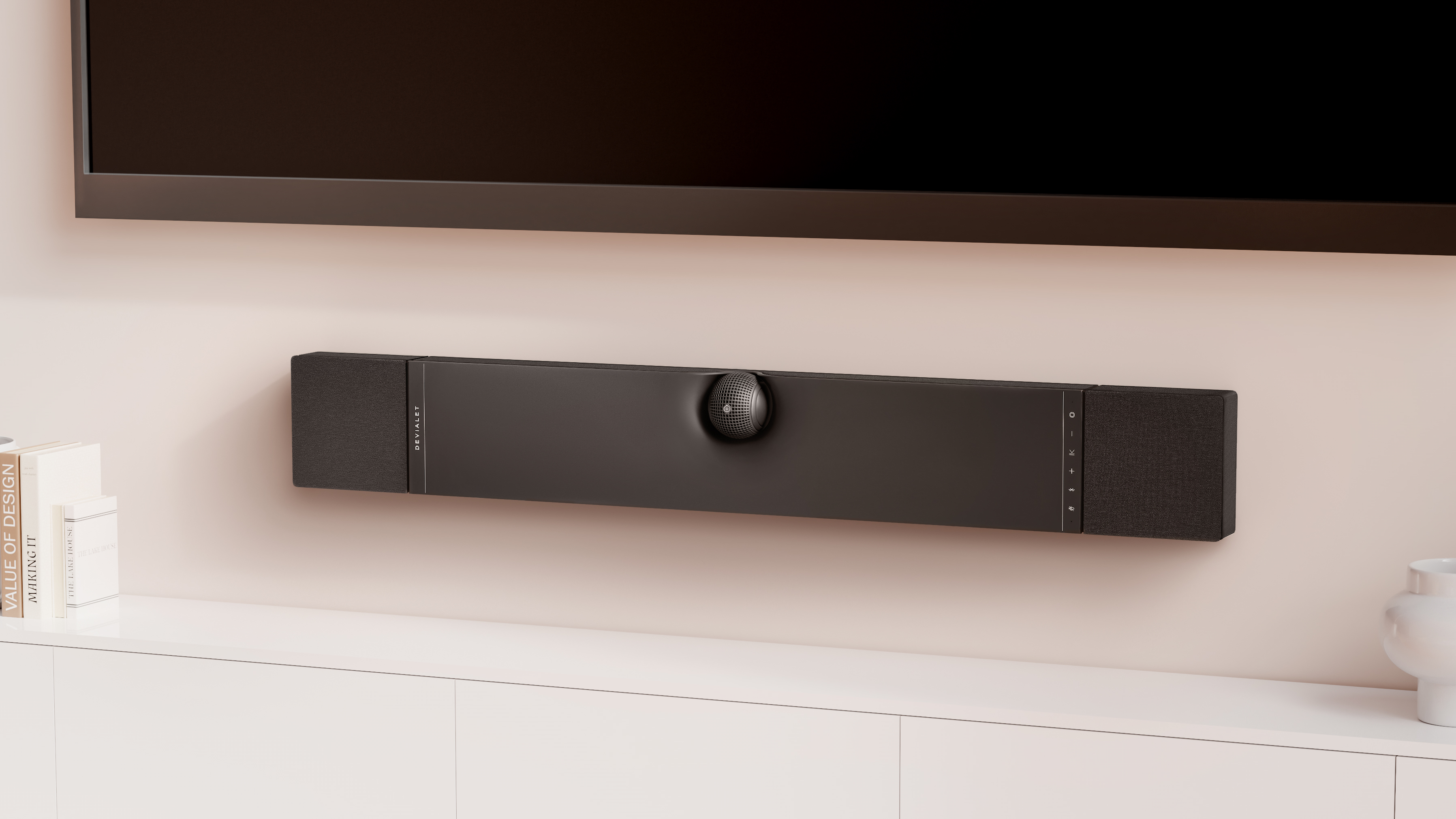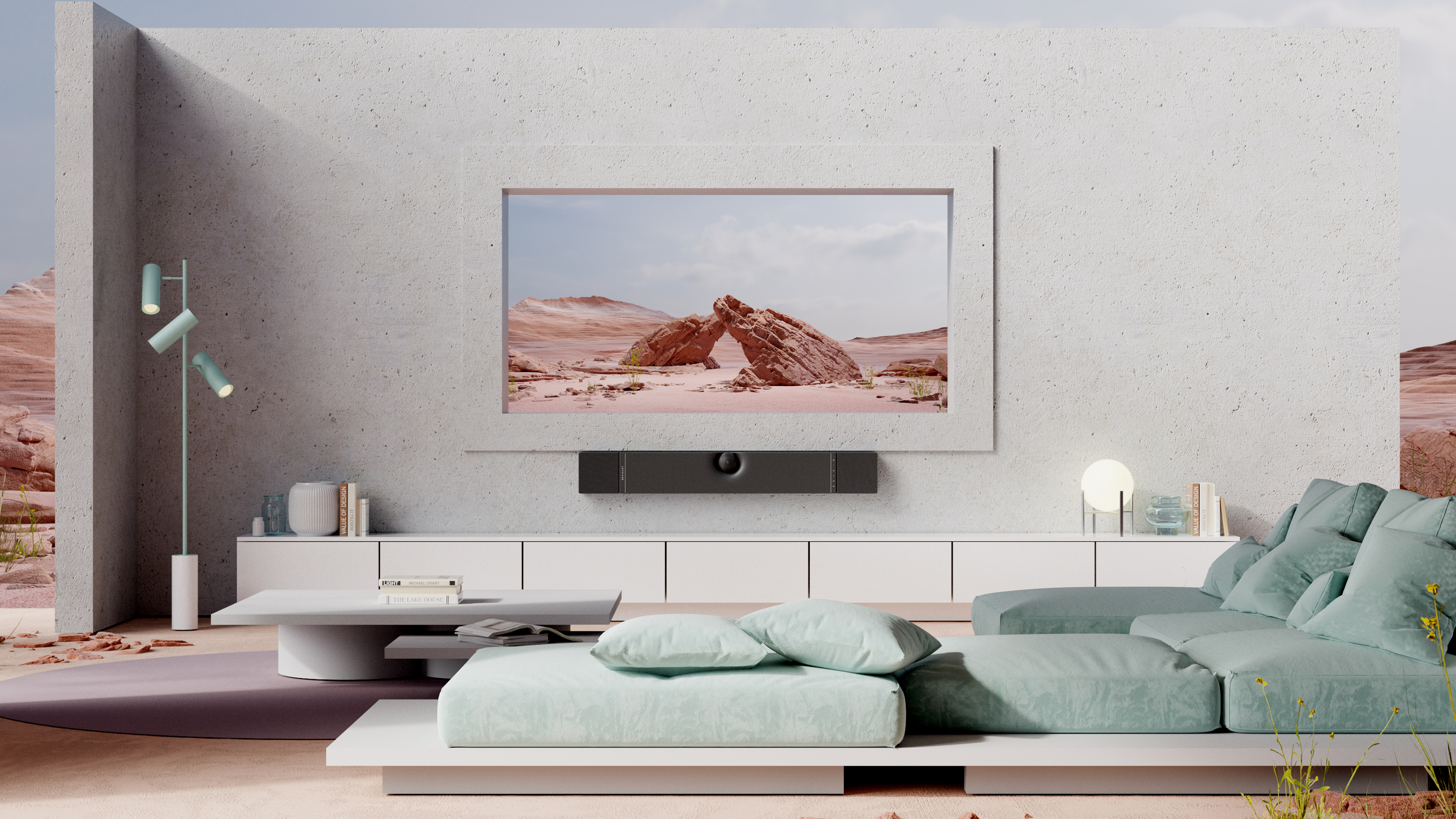This Dolby Atmos soundbar uses a space-age design to tailor audio to your home

French audio brand Devialet has announced its first-ever soundbar - and with Dolby Atmos and room calibration, it could make a convincing alternative to rivals like the Sonos Arc.
While most soundbars look fairly similar to one another, the Devialet Dione employs a striking design that sets it apart from the competition and takes inspiration from the company's previous space age-style wireless speakers.
In the middle of the new Dolby Atmos soundbar is an orb-shaped center channel, that's designed to maintain perfect front-facing calibration, no matter how you position the Dione (fans of the Devialet Phantom I speaker will recognize the spherical design). Whether you place the soundbar underneath your TV, or mount it flush against your wall, the orb points towards you to deliver sound straight to your ears.

As well as mechanically adapting the sound, the orb in the center of the soundbar contains a gyroscopic sensor that detects the position of the soundbar and adjusts the audio signal accordingly.
As with the Sonos Arc, the Devialet Dione can be calibrated to your room for a personalized sound, using the company's app to scan your surroundings.
This should make the soundbar's Dolby Atmos audio feel particularly convincing, as it will know which surfaces it can bounce sound off of to create an immersive listening experience.
Devialet says that, even when the soundbar is mounted to the wall, its upfiring drivers will still beam sound up to your ceiling.
Sign up for breaking news, reviews, opinion, top tech deals, and more.
If you're not watching Atmos content, you'll still be able to achieve a semblance of spatial audio, thanks to the company's proprietary SPACE technology, which upmixes sources into 5.1.2-channel sound.
Push-push it real good

Atmos aside, the sound of the Devialet Dione should be pretty powerful; it contains eight subwoofers and nine aluminum full-range speakers. Those subwoofers utilize Devialet's push-push technology to deliver what the company describes as "powerful, deep bass whatever the volume" without the need for a separate subwoofer.
There are four different listening modes to choose from. The Movie and Spatial modes convert stereo content into multichannel audio thanks to that SPACE algorithm we mentioned, while Voice Mode is designed to make podcasts and news programs sound clearer. Finally, Music mode is there to "faithfully reproduce a stereo setup", and disables all the spatialization effects for a naturalistic sound.
As for connectivity? You get HDMI 2.1 eARC, optical, AirPlay 2, Spotify Connect, UPnP, and Bluetooth 5, so you should be covered whether you want a plug-and-play setup or easy wireless connections with your other devices.
All that combined with a sleek design that stands out from the competition makes the Devialet Dione an intriguing alternative to the best soundbars available today. However, it's hefty price tag may be off-putting to budget-conscious cinephiles.
Available to preorder now and launching officially in April, the Devialet Dione will cost $2,400 / £1,990, and while Australian pricing is yet to be confirmed, that works out at about AU$3,200.
Devialet has never been a bargain basement brand, with its wireless speakers costing as much as $3,200 / £2,790 / AU$5,490. Still, when you can get models like the Sonos Arc and Samsung HW-Q950A for much less, that price tag will only appeal to those that already love the Devialet aesthetic and sound.
- Looking for something cheaper? Read our guide to the best budget soundbars

Olivia was previously TechRadar's Senior Editor - Home Entertainment, covering everything from headphones to TVs. Based in London, she's a popular music graduate who worked in the music industry before finding her calling in journalism. She's previously been interviewed on BBC Radio 5 Live on the subject of multi-room audio, chaired panel discussions on diversity in music festival lineups, and her bylines include T3, Stereoboard, What to Watch, Top Ten Reviews, Creative Bloq, and Croco Magazine. Olivia now has a career in PR.